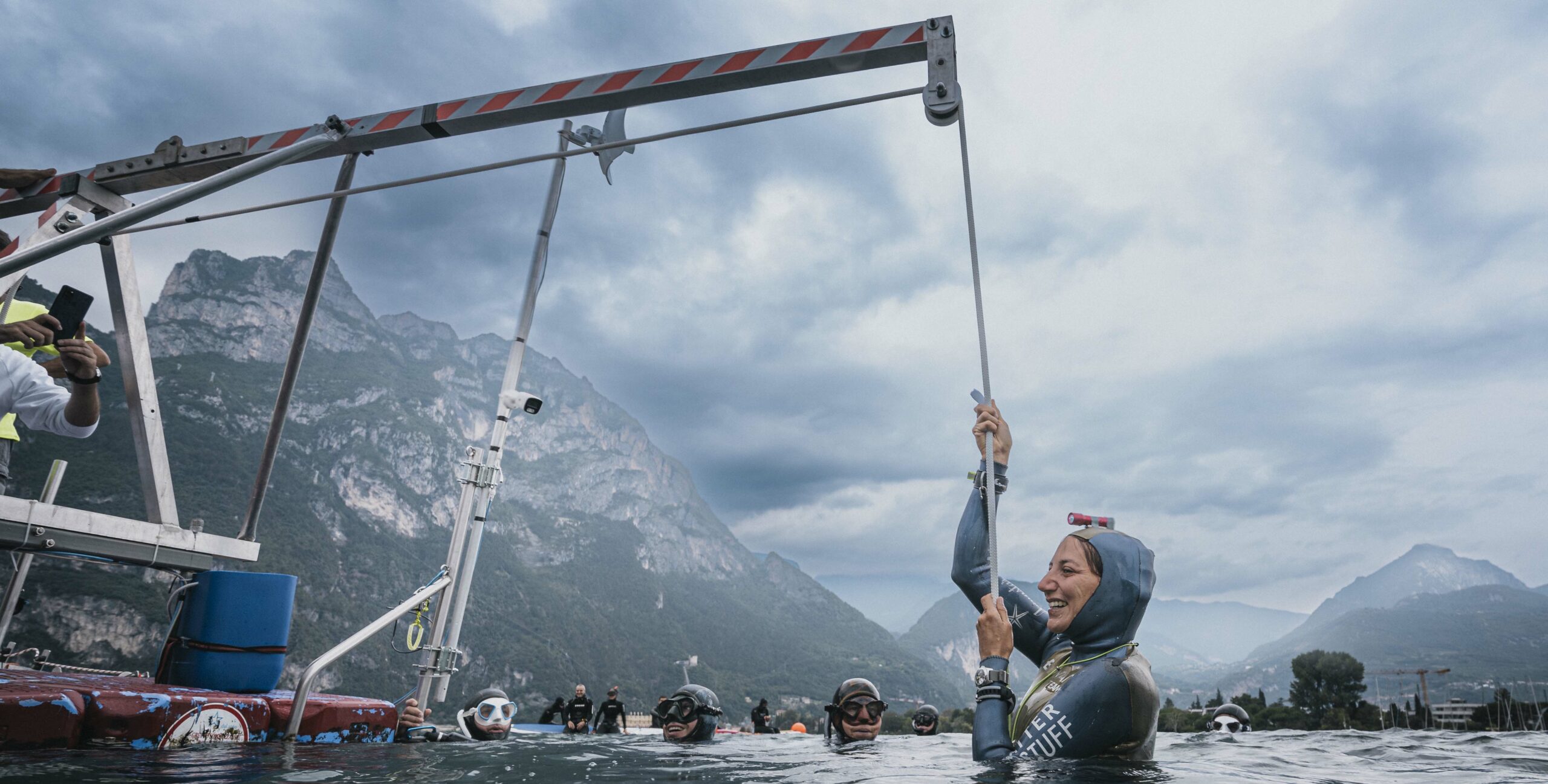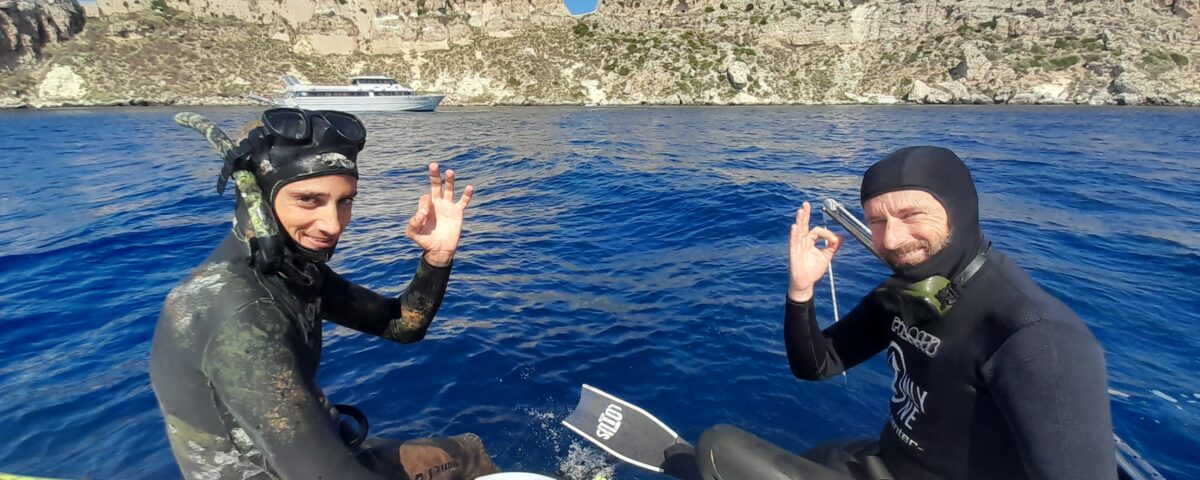Micro-Equipment: The Lanyard

The Rasta Joins Our Team
25 September 2024
The Micro Equipment: Goggles and Nose Clip
10 October 2024As many of you may have noticed, the world of freediving has grown exponentially over the past few decades. Many events and competitions are now organized worldwide, and finally, this sport is starting to get some attention on national television, thanks mainly to the great successes achieved by our athletes during world events. As always, when a market grows, we begin to see investments from companies, and in general, there is a technical and industrial development aimed at improving the equipment and all those accessories that help us in practicing our sport. In this article, we talk about the lanyard
Marco Nones
How many times at the poolside, on a boat, or simply at the bar with freediver friends have we heard praises sung for this or that wetsuit? How many times have we argued in favor of one fin or another monofin? It has certainly happened to all of you many times... I know!
But reducing our sport to which fin or wetsuit is better for improving our performance without delving into many other small details seems too superficial to me. It would be like reducing Formula 1 to how many horsepower you have and what tires you use without giving importance to a thousand other details, such as aerodynamics or the driver's skills... too easy, it doesn't work that way.
In my work, I often hear (maybe too often!) mid-level freedivers say how much they would like to use particular or highly advanced equipment to achieve better results. Of course, when they try out those miraculous pieces of equipment, they are often disappointed and don't improve their performance at all... on the contrary, problems often begin!
As in many other activities, in our sport, performance is built on many details, including personal skills (technique, dedication, training, etc.), primary equipment (wetsuits, masks, fins, monofins), and secondary equipment (lanyards, goggles, nose clips, and dive computers). However, in my opinion, we often forget that in a complex system composed of many details, it is important that all factors blend together coherently, creating a winning "system." Let me explain: if you own the best fins on the market but don't know how to kick properly, you won't achieve the advanced results you hoped for; similarly, if you have good equalization skills but dive with a giant mask, you will always be limited in your performance.
Given that it is not the equipment that makes a good freediver, and knowing that you will easily find information on how to best use the latest fin model or how to choose the best wetsuit on the market, I would instead like to focus on the correct use of some secondary equipment, often overlooked by so-called promoters but which I believe can represent a "plus," especially for advanced freedivers: the lanyard, goggles, nose clip, and dive computer. Let's start with the lanyard.
It is the safety tether between the freediver and the guide rope. Always mandatory during deep diving competitions, it is highly recommended in recreational (non-competitive) freediving, especially when attempting dives to depths that are not easily accessible by safety assistants or, more simply, by your training partners. Naturally, it is also recommended in poor visibility conditions to reduce certain inherent risks in our sport... safety first!
There are many different models on the market, and therefore I won't go into describing them individually, but I would like to highlight the general characteristics that a good lanyard should have to do its job well.
Lanyards are primarily composed of three distinctive elements: the wrist strap, the cord, and a carabiner... let's examine them in detail.
- A good wrist strap should be wide enough to provide a good contact surface with the wetsuit (or the wrist) to avoid "cutting" the neoprene (or the skin); the circumference should be the right size—not too loose, to prevent it from slipping off the wrist, nor too tight, to avoid impeding blood circulation. It may have a Velcro closure or other systems, but it must have the ability to be quickly removed voluntarily, thanks to a quick-release carabiner or other safety systems.
- The cord should be about one meter long (in competitive settings, the length is regulated); from personal experience, I do not recommend deviating too much from this length to avoid discomfort during dives. If it is too short, it won't allow us to distance ourselves adequately from the guide cable, while if it is too long, it may frequently get in the way during certain movements. The presence of swivel joints at the beginning or end (or on both sides) is crucial to allow the cord to rotate naturally, preventing it from twisting around the guide cable or our arm. Generally, the most commonly used material is stainless steel (corrosion-resistant), often coated with plastic or rubber to enhance its water resistance, while the thickness can vary significantly among different models. Personally, I believe that thinner cords offer less resistance (less drag in the water) but must be rigid enough to prevent knots or loops that could get tangled on us or other parts of our equipment.
- The carabiner connecting to the guide cable can vary in size and material. I believe aluminum carabiners are better than steel ones due to their lighter weight. This is especially important during deep dives, as we don't want to carry extra weight that we would then need to bring back to the surface! There are also carabiners made of technopolymer (highly durable materials derived from plastic), which, being non-metallic, are generally even lighter than aluminum ones and can be an excellent alternative. Of course, the size (and opening!) of the carabiner must be large enough to attach securely around our descent cable (an opening of at least 12 mm is generally sufficient).
Placement and practical use: positioning the wrist strap correctly is crucial to minimize the disturbance it inevitably causes, depending on the discipline being practiced, its placement can vary greatly. Let's see how.
In constant weight (with fins), it is generally placed on the wrist (recommended on the "strong" arm, the left for left-handers), although in recreational (non-competitive) settings, one may choose to attach it to the waist with a non-elastic "belt" specifically designed to free the arms from encumbrances.
In free immersion, the recommended position is again on the wrist, but as with constant weight, it can be positioned on the waist using the usual belt system (this position is allowed only in recreational settings, not in competition); there is also a third possible position, on the ankle, which I strongly advise against as, due to its length, it would hinder our movements during surface preparation and the turn at the plate. Moreover, considering that in the case of a counterweight release, the freediver would be pulled to the surface by the ankle (thus upside down), we immediately understand the lack of safety and practicality of this solution.
In constant weight without fins (underwater breaststroke), however, we have only one option, which is to use the non-elastic dedicated belt; in fact, due to the use of all limbs for propulsion, we cannot place the wrist strap on the wrists or ankles as it would impede proper propulsion movement.
In any case, I always advise my students to gradually get used to using it by performing some training sessions at moderate depths, but with many dive repetitions. During these sessions, I want them to get accustomed to its presence, to handling it during preparatory phases both in and out of the water, and especially to become familiar with the basic techniques (duck dive, kicking, plate turn), possibly adapting them to use with this new tool so they feel fully comfortable before attempting more challenging dives.
As you have probably understood by now, alarms should be used to lighten the "workload" on our brain so it can focus on the correct technical gestures and therefore pay more attention to them during the delicate phases of our dives. Essentially, by using them correctly, we will learn to react to them automatically... try it to believe it!



